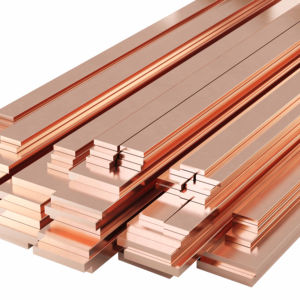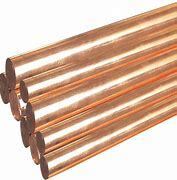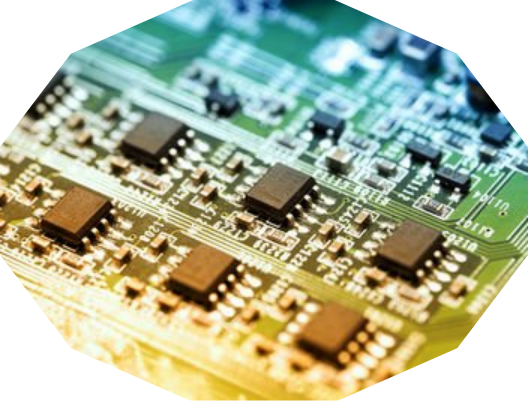1. Introduction
Copper rod is one of the most versatile and widely used metal forms in modern industry. From electrical grounding to plumbing and metal fabrication, its high conductivity, corrosion resistance, and malleability make it indispensable. Whether you’re an electrician, plumber, or scrap recycler, understanding the different types and applications of copper rod—and related copper products like strips, pipes, and bars—is essential for making informed decisions.

2. What Is a Copper Rod?
A copper rod is a solid, cylindrical piece of copper typically produced through extrusion or drawing processes. It comes in various diameters and lengths, serving as a raw material for manufacturing wires, connectors, and components. High-purity copper rods (often 99.9% Cu) are especially valued in electrical applications due to their excellent conductivity.
3. Common Types and Applications of Copper Rod
Copper rods are not one-size-fits-all. Their composition and finish determine their ideal use cases.
- Copper earth rod and earthing rod copper are used in grounding systems to safely channel electrical faults into the earth. These are often made from solid copper or copper-bonded steel for durability.
- Ground rod copper and copper bonded ground rod offer cost-effective alternatives. Copper bonded steel combines a steel core with a thick copper layer, balancing strength and conductivity.
- Copper brazing rod and copper to copper brazing rods are filler metals used in joining copper parts without melting the base metal. They’re essential in HVAC and plumbing repairs.
- Copper welding rod, copper rod for welding, and copper to copper welding rod are used in specialized welding applications where high thermal conductivity is needed. Welding rod copper ensures strong, clean joints in copper-to-copper assemblies.
4. Copper Rod Pricing and Availability

Copper rod price varies based on purity, diameter, and market conditions. Solid copper rods are more expensive than copper bonded or copper clad variants. For budget-conscious projects, copper bonded earthing rod or copper clad steel ground rod options provide reliable performance at lower costs. When comparing earthing rod price, always consider longevity and soil corrosion resistance.
5. Copper Strips and Flat Products
Beyond rods, flat copper forms like copper strip are widely used in electrical panels, grounding, and even decorative applications. You’ll often see terms like flat copper strip, thin copper strips, or 1mm copper strip when sourcing materials.
Specialized variants include beryllium copper strip (for springs and connectors), nickel plated copper strip (for enhanced corrosion resistance), and copper earth strip 25x3mm for grounding installations. Copper strip price depends on thickness, alloy, and quantity—roll of copper strip is common for bulk buyers.
For recyclers, questions like ‘best way to strip copper wire’ or ‘fast way to strip copper wire’ are common. Stripping copper wire for scrap should avoid burning copper wire for scrap, as it’s hazardous and illegal in many areas. Instead, use mechanical strippers or automated tools for stripping wire for recycling.
Other niche uses include copper tape for snails (a garden pest deterrent) and copper roof strip for architectural detailing. If you’re searching for ‘copper strip near me,’ local metal suppliers or electrical wholesalers usually carry standard sizes.

6. Copper Pipes and Tubing
While not rods, copper pipes are closely related in both material and application. Air conditioning copper pipe (also called aircon copper tube or AC copper pipe) is vital in refrigeration systems. Common sizes include 15mm copper pipe, 22mm copper tube, and 3/4 copper tubing.
Proper installation involves copper pipe soldering or using copper pipe fittings and connectors. Bending copper pipe requires care to avoid kinks, and cleaning copper pipe before soldering ensures strong, leak-free joints. Pricing varies by size and type—ac copper pipe price is typically higher for refrigeration-grade tubing.
Note: PEX plumbing pipes are increasingly replacing copper in residential water lines due to cost and ease of installation, but copper remains preferred for high-temperature and high-pressure applications.
7. Copper Bars and Ingots
Copper bar and copper round bar (also called round bar copper) serve as feedstock for machining and electrical components. Flexible copper bus bar and copper flat bar are common in power distribution systems. Cu bars and copper bars for sale come in various tempers and purities.
For industrial users, copper ingot and copper ingot price matter when casting custom parts. Meanwhile, 1oz copper price is more relevant to investors or jewelers. Copper bar top applications include switchgear, transformers, and renewable energy systems.
8. Practical Tips for Working with Copper
Whether you’re installing an earthing rod copper system or stripping copper wire for scrap, safety and efficiency matter. Always verify local codes for grounding installations. When recycling, avoid burning insulation—use proper stripping tools instead. For welding or brazing, select the right copper rod type: copper to copper brazing rods for low-temp joins, copper welding rod for structural integrity.
9. Conclusion
From copper rod to copper strip, pipe, and bar, copper’s versatility makes it a cornerstone of modern infrastructure. Understanding the differences between solid copper, copper bonded, and copper clad products helps you choose the right material for cost, performance, and longevity. Whether you’re grounding a building, repairing an AC line, or recycling scrap, copper remains a reliable, valuable, and sustainable choice.
Our Website founded on October 17, 2012, is a high-tech enterprise committed to the research and development, production, processing, sales and technical services of ceramic relative materials such as Copper. Our products includes but not limited to Boron Carbide Ceramic Products, Boron Nitride Ceramic Products, Silicon Carbide Ceramic Products, Silicon Nitride Ceramic Products, Zirconium Dioxide Ceramic Products, etc. If you are interested, please feel free to contact us.

